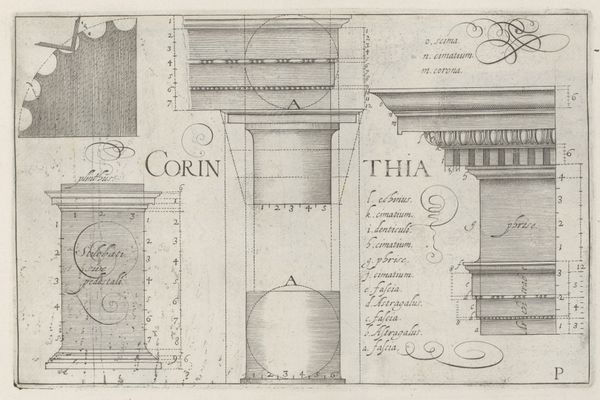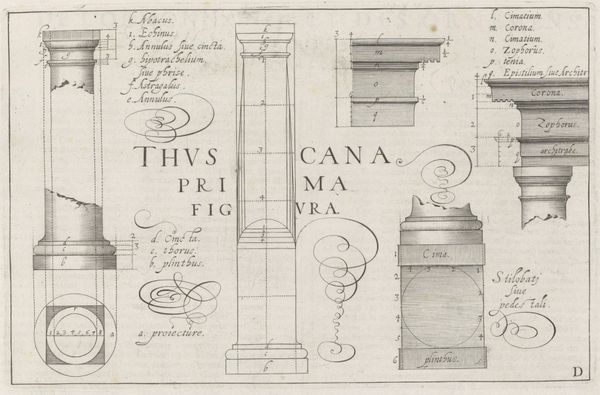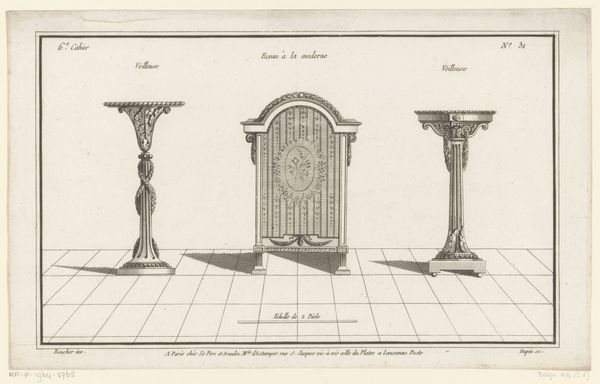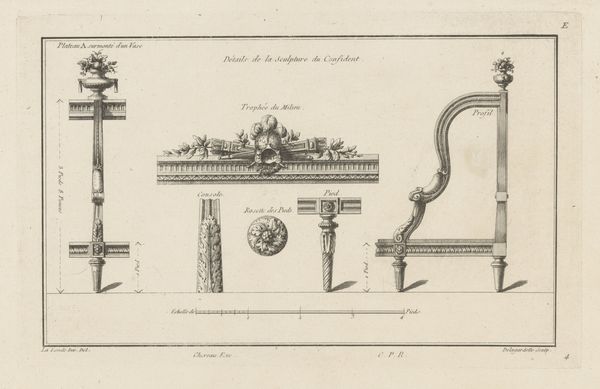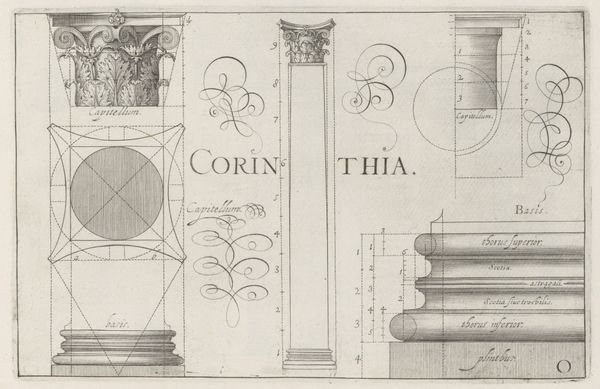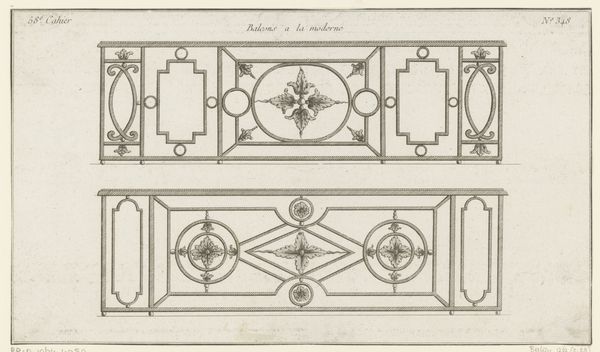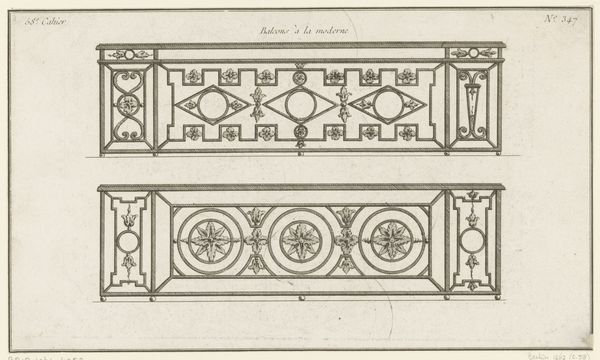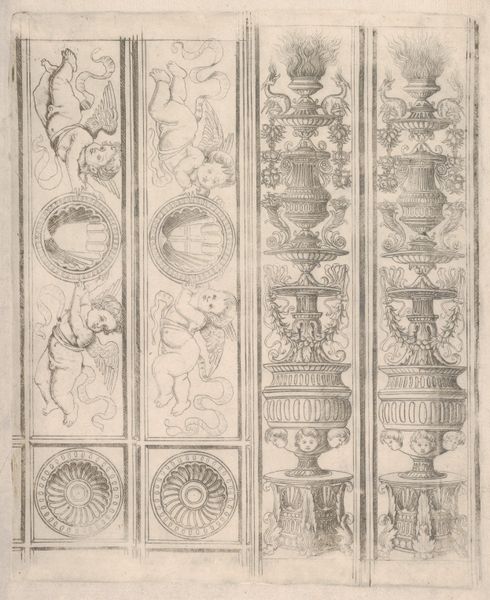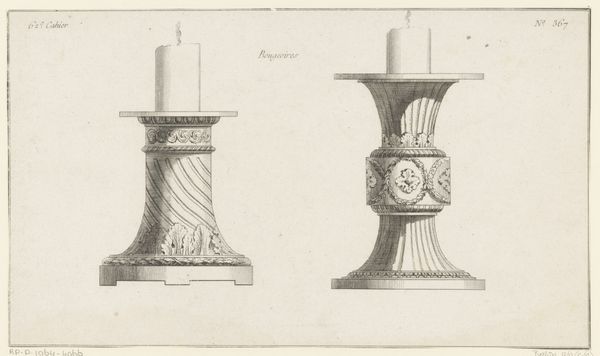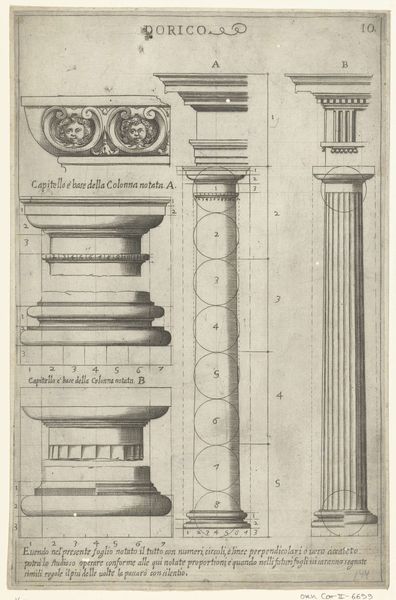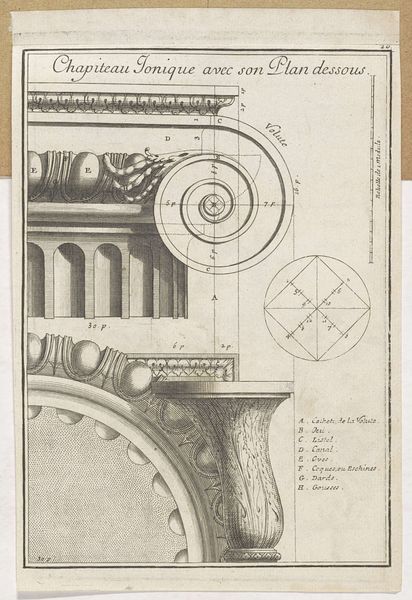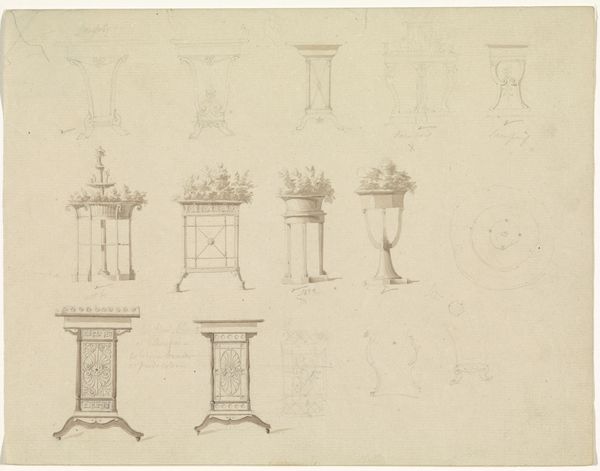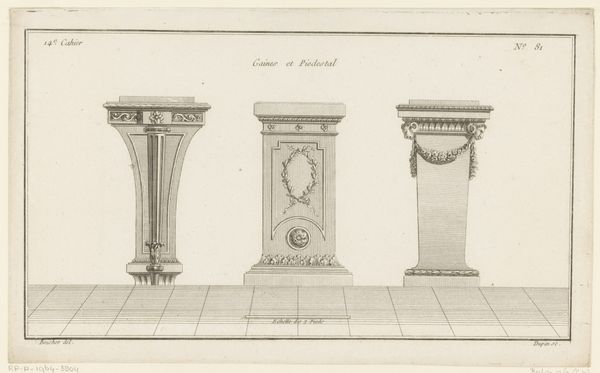
drawing, print, engraving, architecture
#
drawing
#
aged paper
#
quirky sketch
# print
#
old engraving style
#
sketch book
#
form
#
11_renaissance
#
personal sketchbook
#
idea generation sketch
#
sketchwork
#
geometric
#
ancient-mediterranean
#
line
#
sketchbook drawing
#
storyboard and sketchbook work
#
academic-art
#
engraving
#
architecture
#
initial sketch
Dimensions: height 187 mm, width 286 mm
Copyright: Rijks Museum: Open Domain
Editor: This is "Dorische zuil," a drawing, or rather a print, made by Hendrick Hondius I between 1606 and 1620. It depicts a Doric column. I find the rigid structure, juxtaposed with those whimsical calligraphic flourishes, quite intriguing. How do you interpret this work? Curator: This image allows us to explore the intersection of knowledge, power, and representation in the early 17th century. It's more than just an architectural drawing; it's a statement about the enduring legacy of classical ideals and their continued relevance to contemporary society. The detailed depiction, with precise annotations, attempts to dissect and codify classical form, making it accessible for study. Editor: So, it's about control and understanding through categorization? Curator: Precisely! And further, consider who has historically had access to and the means of interpreting such knowledge. Architectural knowledge wasn't equally distributed, reflecting broader power imbalances within society. The Doric column itself, with its associations with strength and stability, has been historically employed to symbolize authority. How do you see this play out here? Editor: It's fascinating to think about this seemingly simple image as participating in this long history of architectural forms being linked to specific cultural meanings and the power structures embedded within. Curator: Indeed. By studying and replicating classical forms, Renaissance artists and architects aimed to emulate the perceived perfection of antiquity, thereby legitimizing their own positions within society. This print reflects those power dynamics and access to classical ideals. Editor: This has opened my eyes to how much more there is beyond the mere visual depiction of a column; I understand it better now. Curator: It shows how deeply art can be embedded in social structures.
Comments
No comments
Be the first to comment and join the conversation on the ultimate creative platform.
